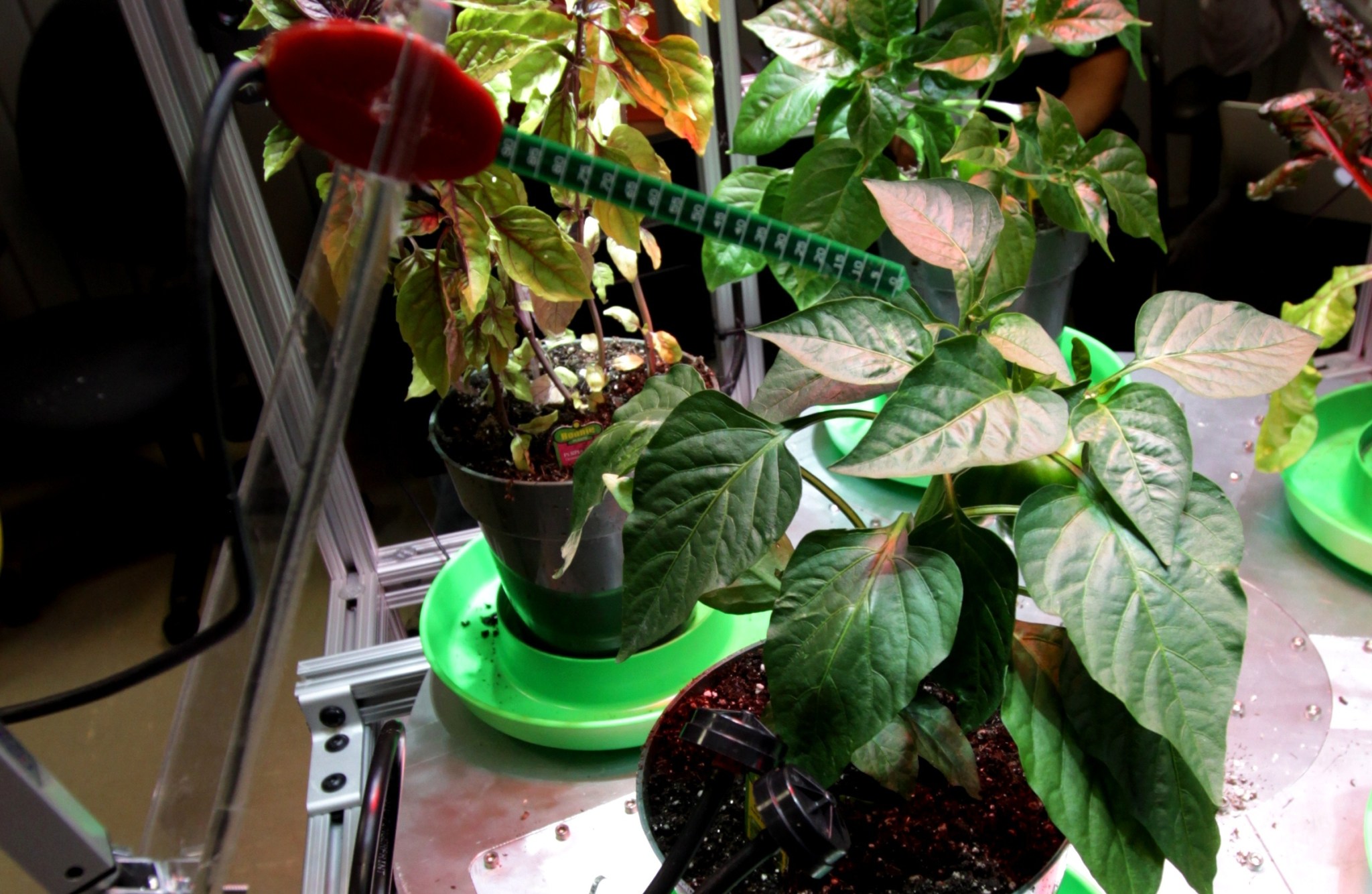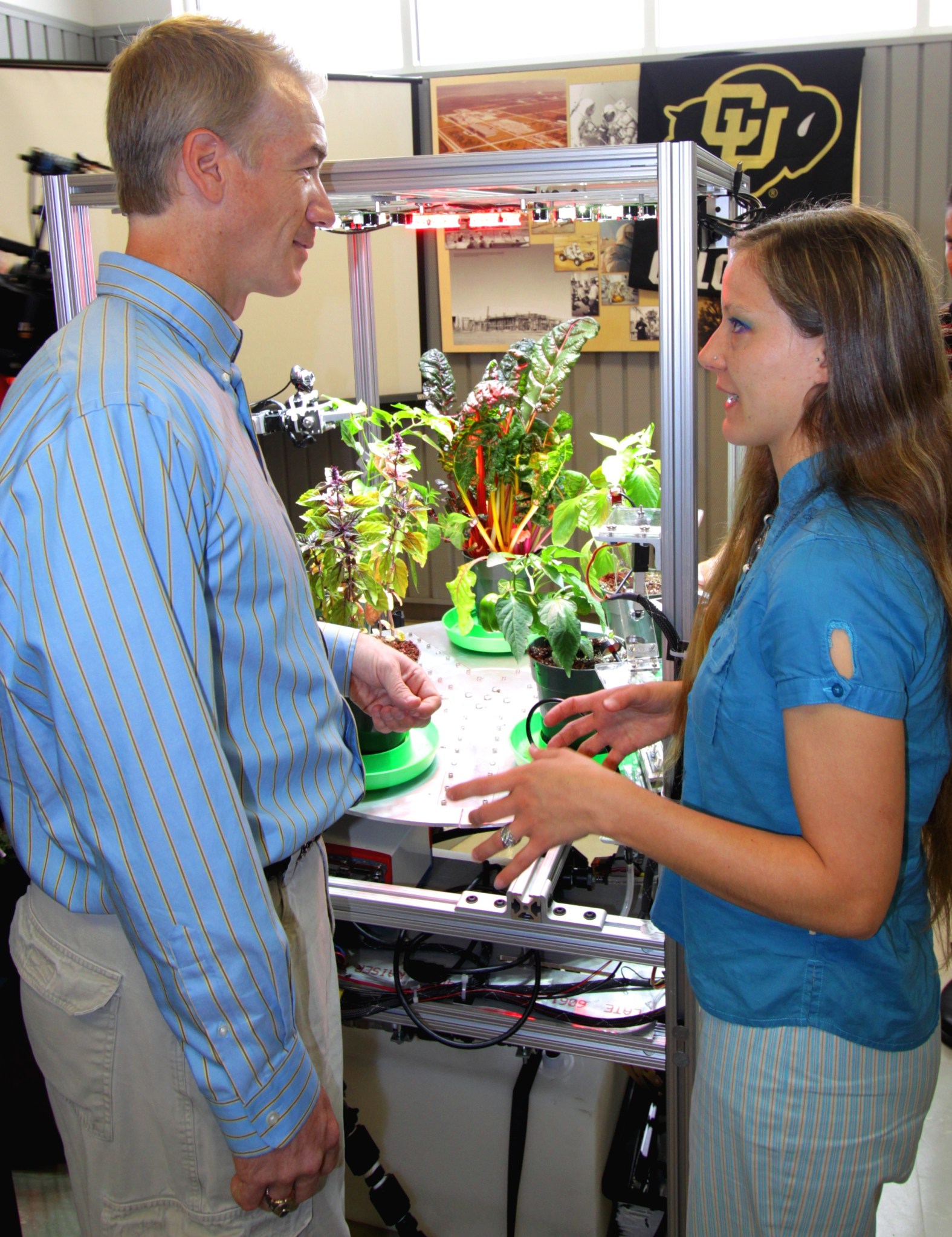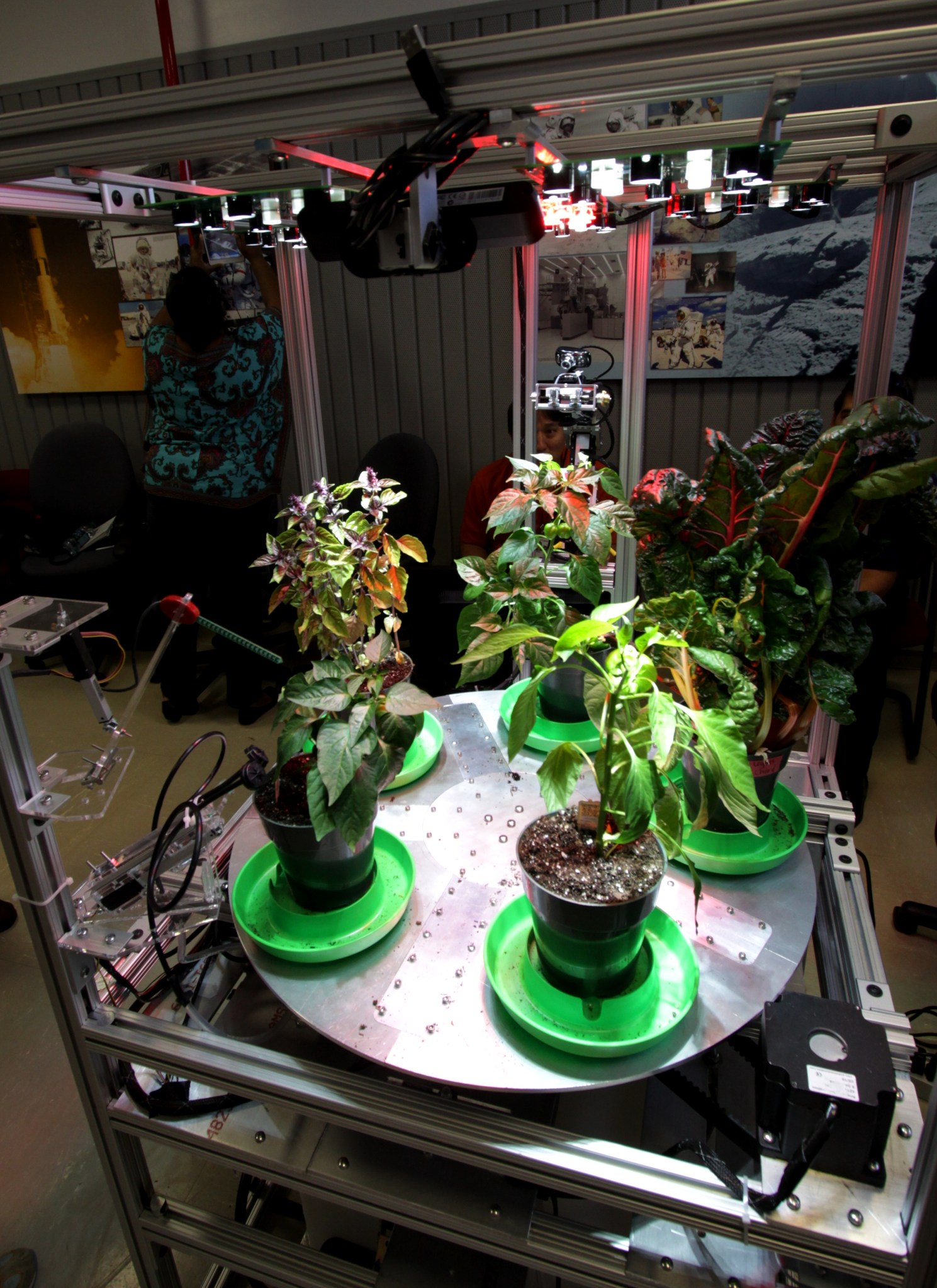Future space travelers on long missions may be aided by robotic farmers. Students from the University of Colorado Boulder recently demonstrated how such a system could work at NASA’s Kennedy Space Center in Florida. The group is developing remote plant production technology for use on the space agency’s deep-space habitat prototype.
The team of 11 students from the University of Colorado and one from Colorado State University developed the Robotic Gardening System as part of a graduate course sponsored by NASA and the National Space Grant X-Hab Academic Challenge.
“We’re involved in a one-year project management class that implements the systems engineering approach to complete the production of actual hardware,” said Heather Hava, who is working on a doctorate in aerospace engineering sciences with a focus in bioastronautics at the University of Colorado. “Our focus is on an automation strategy — building the robotic hardware and developing demonstration concepts.”
The eXploration Habitat, or X-Hab, Academic Innovation Challenge is a university-level activity designed to engage and retain students in STEM disciplines — science, technology, engineering and math. NASA benefits from the effort by sponsoring the development of concepts from universities which may result in new approaches that could be applied to future exploration habitats.
On June 21, the Colorado X-Hab team showed how their Remote Plant Production System works during a demonstration at Kennedy’s Swamp Works where NASA scientists work on developing rapid, innovative and cost-effective exploration mission solutions through partnerships across NASA, industry and academia.
“We want to engage university teams in developing new technologies,” said Tracy Gill of Kennedy’s Center Planning and Development Directorate. “This innovation challenge is in its third year. While based at NASA’s Johnson Space Center in Texas, Kennedy is one of the supporting centers.”
According to Hava, the team’s focus primarily is on developing the hardware to support plant life which she will use for her doctoral research in life support systems and human plant interaction in collaboration with Ray Wheeler, Ph.D., of the Engineering and Technology Directorate at Kennedy.
“Our focus is on an automation strategy and developing demonstration concepts of robotic work,” Hava said.
Gill added that the team is benefiting from working with Kennedy plant biologists such as Wheeler and Gioia Massa, Ph.D., of the International Space Station Ground Processing and Research Project Office.
“Both scientists are key contributors to payload development efforts at Kennedy for plant studies aboard the space station including a vegetable production unit called Veggie and the experimental growth chamber called Advanced Plant Habitat,” he said.
The group from the University of Colorado is developing the capability to grow a variety of plants, both for consumption and for oxygen-carbon dioxide recycling on long-term spaceflights.
“Their system is a stand-alone project focusing on what future hardware should look like,” Gill said. “They are path-finding the kinds of technologies we need to evolve systems such as Veggie and APH and pave the way to bio-regenerative environmental control systems that will enable long-term deep-space missions.”
The student team’s apparatus allows various plants to be rotated under light-emitting diodes to simulate the sun. The plants can be monitored by small web cameras and remotely moved as needed. A robotic arm allows observers to tend to the vegetation.
A robotic probe in another position can check the soil to determine its moisture content and then can add water and nutrients.
“Software is also being developed to allow a robotic arm to grip and cut leaves, as well as harvest fruit,” said Hava. “Our long-term goal is to make the system as automated as possible to save space travelers from the mundane parts of plant care.”
While the goal is to ultimately create a system that is self-sustaining, plans also would allow astronauts to work directly with the plant system.
Hava noted that her team also is studying both the physiological and psychological benefits of growing plants in space.
“We want to see what parts of plant care people enjoy and use this data to develop an automation strategy to maximize the plant interaction benefits for astronauts,” she said.
Hava was a member of the 2012 class of NASA Space Technology Research Fellows. Agency research fellows are graduate students who show significant potential to contribute to NASA’s goal of creating innovative new space technologies. In a report for NASA, Hava wrote about the role plants may have in long-duration spaceflight.
“Plants also provide an important link to Earth, exploiting the sensory enrichment of nature to contrast the stark and sterile machine environment typical of space habitats,” she said.
Building a remotely-operated greenhouse is part of a larger project led by Nikolaus Correll, assistant professor of Computer Science at the University of Colorado and former NASA astronaut Joe Tanner, now a senior instructor of aerospace engineering sciences at the university. The hardware developed by the students will be used to investigate the fundamental challenges of tele-operation and eventually fully autonomous food production.
Overall, the NASA X-Hab Challenge was developed by the National Space Grant Foundation for the Habitation Systems Project team at Johnson and is part of the agency’s Advanced Exploration Systems Program. The challenge is a senior and graduate level course in which students design, manufacture, assemble and test an inflatable loft that is integrated onto an existing NASA-built operational hard shell prototype.
This year’s selected projects are being developed by student teams from the University of Alabama at Huntsville, California Polytechnic State University at Pomona, Oklahoma State University, Texas A&M University and the University of Colorado.





























